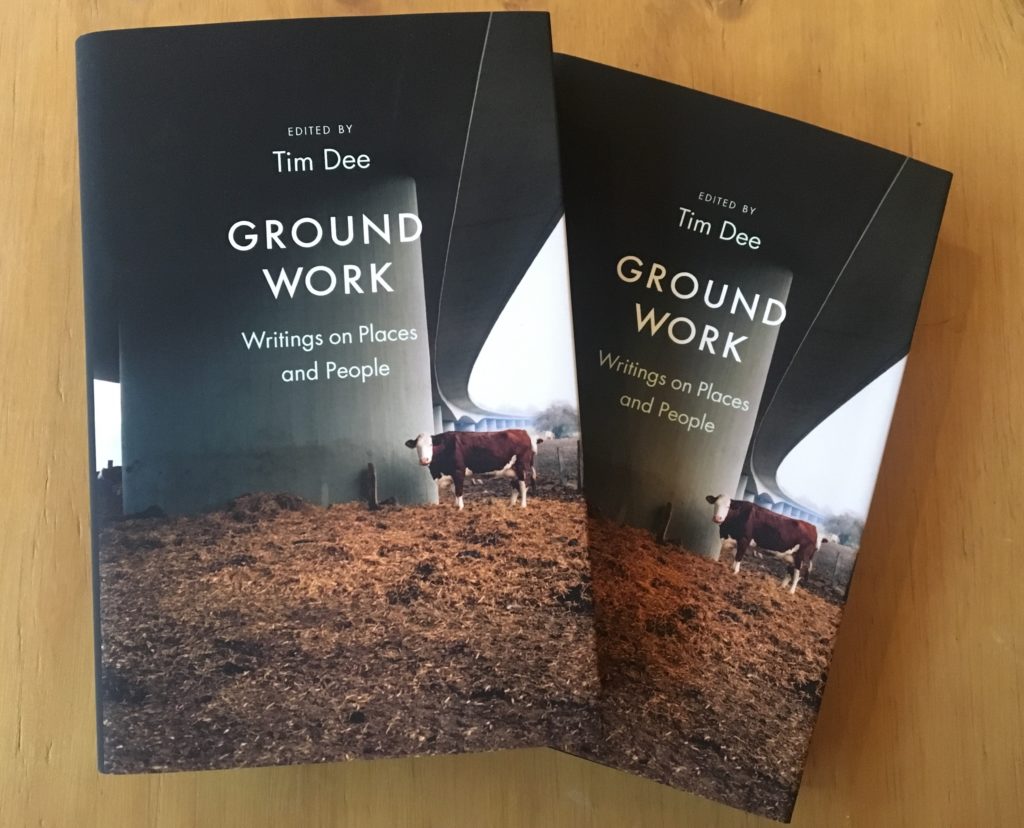Sue Brooks reviews our current Book of the Month – Ground Work: Writings on People and Places, edited by Tim Dee, published by Jonathan Cape, and out now.

These are the former glories of the house
although I like their fall and brokenness
much more than grieving for a time I missed.
As also I like walking with the ghosts
that wander through the garden everywhere.
These lines in Andrew Motion’s contribution to this superb anthology conjure the person I most associate with Common Ground – Roger Deakin. He was there at the beginning and will no doubt have been hovering over its passing into the hands of Adrian Cooper and Gracie Burnett, who happen also to be the publishers of Little Toller Books. There could be no one better.
Ground Work is the sequel to Second Nature, published in 1984. It is timed to mark the revival of the charity’s work in its new location. On Places and People says the subtitle: thirty one people with an astonishing diversity of subjects and styles, writing about their favourite places – and thirty two if you count the fine introduction by Tim Dee, the mover and shaker of the whole enterprise.
He quotes Russell Hoban – “Place itself may not be possible at all…all the place…is may well be no more than the moving point of consciousness in us” – which may be true, existentially speaking, but expanded points can turn into Wordsworth’s “spots of time”, as many of these essays describe, imbued with deep meaning. Paul Farley on the Goree sculpture in Liverpool; Adam Thorpe’s other worlds in the puddle on the track to Dunmore Farm; Andrew McNeillie and Greg Poole’s allotments; Helen Macdonald pressing her face to the grass in the meadow as a child ‘to watch insects the size of the dot over an “i” moving in the earthy tangle where the difference between stems and roots grew obscure’; Julia Blackburn laying out her shells on a table and thinking ‘they looked like music, or a story without the need for words’.
The anthology for me became a kind of pilgrimage: Canterbury Tales with Tim Dee leading his merry band to the new Common Ground site in Dorset and the reader able to walk along, sometimes with one companion, sometimes another. The familiar names first: Marina Warner taking her favourite walk across the Oxford meadows and the river to the little church at Binsey to pay tribute to Gerard Manley Hopkins; Adam Nicolson contemplating the changes at Perch Hill over twenty five years and the long lessons he, and also Richard Mabey, have learned about land ownership.
Those carrying the banner of Common Ground to follow. The Campaign for Local Distinctiveness and Parish Maps were two of the original projects, and they continue in Ground Work through Hugh Brody’s Story of Arctic Maps, Barbara Bender’s Branscombe Project in East Devon, set up in 1993 to record the voices and memories of people in the village, and Ken Worpole’s history of Clissold Park in Hackney.
And then there are the others – the unknowns. The ones I feel shy about approaching. I hang around listening to their conversations. Tim Ingold is talking to Richard Holmes about Cevennes in Central France, and Karelia in S.E. Finland. John Burnside walks alone, and so does Patrick McGuinness. I take my chance. I listen to the close attention John Burnside gives to the wooden crosses along a short stretch of Highway 86 in southern Arizona – how it opens a stillness in him ‘where [his] mind [is] empty of noise’ – a place where he could witness crossings from one world to another. A numinous moment which could have been a poem, but is beautifully crafted in prose. I read Patrick McGuinness’s story about Clifton Suspension Bridge in Bristol, passing rapidly from third to first person as he leafs ‘through the portfolio of regrets that is my adolescence’. So powerful in structure and heart-wringing in the telling, I need to know where he lives now. Is it a place of simile or of metaphor – a bridge or an estuary? I’m relieved to find he lives in Caernarfon at the mouth of the River Seiont in N.Wales. It means ‘There’s still time to change everything.’
The youngest in this Canterbury Tale walks at the rear. His name is Sean Borodale. He works as an artist and a writer. His first collection of poems, Bee Journal, was shortlisted for the T.S Eliot Prize and the Costa Poetry Book Awards. He keeps bees in Somerset. His contribution to Ground Work is not a poem. It is ten pages of prose entitled I Am Still Yesterday. There is a feeling of electricity around him, a heightened sensitivity and consciousness that crackles everywhere. It shocks the reader’s mind into a different gear. Things happen. He may be the rearguard in my little conceit about the Canterbury Tales, but in another sense he is the flagbearer for the future.
There is more, so much more. It doesn’t matter whether the place is as small as a shell or a puddle, or as vast as a seaview, it’s all in the relationship: points of consciousness, spots of time, paying attention, opening the heart. There are thirty one testaments in this collection about how to live lightly in the world and care deeply for its future. It is more than “singing in the dark times”: it is overwhelmingly a message of hope.
*
Ground Work: Writings on People and Places is out now and available here.
You can read an extract from Tim’s introduction to the book here.